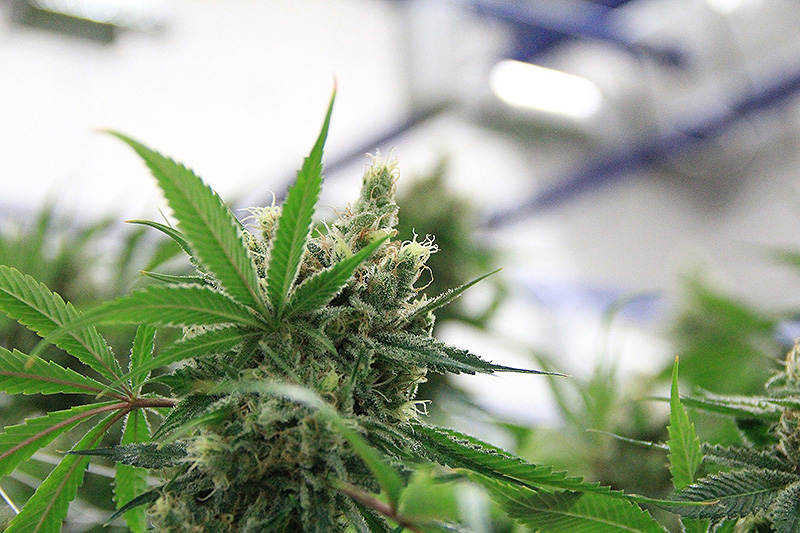Table of Contents
- 1 Introduction to Cannabis and Inflammation
- 2 Understanding the Endocannabinoid System and its Role in Inflammation
- 3 Benefits of Cannabis for Inflammation Relief:
- 4 Different Types of Cannabis Strains for Inflammation Relief
- 5 How to Choose the Right Strain for Your Needs
- 6 Other Methods for Using Cannabis for Inflammation Relief
- 7 Possible Risks and Precautions
- 8 Conclusion
Last Updated on November 16, 2023 by Team Spinfuel
 Introduction to Cannabis and Inflammation
Introduction to Cannabis and Inflammation
Cannabis strains and inflammation relief is very, very real. Whether you’re a seasoned cannabis user or new to exploring its therapeutic benefits, this article will provide valuable insights into how different strains of cannabis can help alleviate inflammation in the body. Inflammation is a common underlying factor in various health conditions, including chronic pain, arthritis, and autoimmune disorders.
Understanding how cannabis interacts with our bodies through the endocannabinoid system can shed light on why it’s becoming an increasingly popular alternative for natural relief. So let’s dive in and discover the potential of sativa and indica strains when it comes to soothing inflammation!
Understanding the Endocannabinoid System and its Role in Inflammation
The Endocannabinoid System is a complex network of receptors and neurotransmitters found throughout the body. It plays a crucial role in maintaining balance and homeostasis, including regulating inflammation.
When inflammation occurs, the Endocannabinoid System kicks into gear to help reduce it. The two main types of receptors involved are CB1 and CB2 receptors. CB1 receptors are primarily located in the brain and central nervous system, while CB2 receptors are mainly found in immune cells.
When activated by cannabinoids like THC or CBD, these receptors can help modulate immune responses and decrease inflammation. This is why cannabis has shown promise as a potential treatment option for conditions characterized by chronic inflammation.
In addition to activating cannabinoid receptors, cannabis also interacts with other systems involved in inflammation regulation, such as the TRPV1 receptor and cytokines. By influencing these pathways, cannabis strains can further contribute to reducing inflammatory responses.
Understanding how the Endocannabinoid System works provides valuable insights into how cannabis can be used effectively for inflammation relief. Further research is needed to fully uncover its potential benefits and optimize its use in different inflammatory conditions.
Benefits of Cannabis for Inflammation Relief:
Cannabis has gained significant attention in recent years for its potential benefits in relieving inflammation. Research suggests that cannabis, specifically the cannabinoids found within it, may have anti-inflammatory properties that can help alleviate symptoms associated with various inflammatory conditions.
One of the key components of cannabis is CBD (cannabidiol), which has been shown to have potent anti-inflammatory effects. CBD interacts with the body’s endocannabinoid system, a complex network of receptors and neurotransmitters involved in regulating many physiological processes, including inflammation.
Another important cannabinoid found in cannabis is THC (tetrahydrocannabinol). While THC is primarily known for its psychoactive properties, studies indicate that it also possesses anti-inflammatory properties. However, it’s worth noting that high levels of THC may cause unwanted side effects such as anxiety or intoxication.
Different strains of cannabis contain varying ratios of CBD to THC, allowing individuals to choose a strain that suits their specific needs. Sativa-dominant strains are often preferred for daytime use as they tend to provide more uplifting and energizing effects. On the other hand, Indica-dominant strains are commonly used at night due to their relaxing and sedating qualities.
It’s essential to consult with a healthcare professional or knowledgeable budtender when selecting a strain for inflammation relief. They can guide you towards strains with higher levels of CBD and lower amounts of THC if you’re seeking purely therapeutic benefits without experiencing psychoactive effects.
In addition to smoking or vaping cannabis flowers, there are alternative methods available such as using topical creams or oils infused with cannabinoids directly on affected areas. These topicals allow targeted relief by delivering cannabinoids directly into the skin where inflammation occurs.
While research on cannabis’ effectiveness in treating inflammation is still ongoing and individual results may vary, many people report positive experiences using this natural remedy for symptom relief. It’s important to note that everyone reacts differently to cannabis, so it’s crucial to start with low doses and gradually increase as
Different Types of Cannabis Strains for Inflammation Relief
When it comes to finding relief from inflammation, cannabis strains can play a crucial role. With its powerful anti-inflammatory properties, cannabis has been gaining attention as a natural alternative for managing inflammation-related conditions.
Sativa strains are known for their uplifting and energizing effects. They tend to have higher levels of THC, the psychoactive compound in cannabis, which can provide pain relief by reducing inflammation. Sativa strains also have terpenes that contribute to their anti-inflammatory properties.
On the other hand, Indica strains are renowned for their relaxing and sedating effects. These strains typically contain higher levels of CBD, the non-psychoactive compound in cannabis that is well-known for its potential anti-inflammatory benefits. CBD interacts with the endocannabinoid system in our bodies to help reduce inflammation and promote overall wellness.
Hybrid strains offer a balanced combination of both Sativa and Indica characteristics. This means they can provide both pain relief and relaxation simultaneously, making them popular choices among individuals seeking inflammation relief.
It’s important to note that everyone’s body chemistry is unique, so what works well for one person may not work as effectively for another. It might take some trial and error before finding the right strain that provides optimal inflammation relief.
In addition to considering strain types, it’s worth exploring different delivery methods such as smoking or vaporizing dried flower, consuming edibles or tinctures infused with cannabinoids like THC or CBD.
By experimenting with various strain types and consumption methods under medical supervision if necessary , individuals suffering from chronic inflammation may find significant relief without relying solely on traditional pharmaceuticals
How to Choose the Right Strain for Your Needs
When it comes to choosing the right cannabis strains for inflammation relief, there are a few factors to consider. First and foremost, you’ll want to determine whether you prefer Sativa or Indica strains.
Sativa strains are known for their energizing and uplifting effects. They can be great for daytime use when you need to stay focused and alert while managing your inflammation. On the other hand, Indica strains tend to have more sedating properties, making them perfect for nighttime use when relaxation and pain relief are paramount.
Next, take a look at the cannabinoid profile of each strain. CBD is widely regarded as an anti-inflammatory compound, so strains with higher levels of CBD may be particularly beneficial in reducing inflammation.
Consider the terpene profile of different strains. Terpenes are aromatic compounds found in cannabis that contribute not only to its scent but also its therapeutic effects. Some terpenes like beta-caryophyllene have been shown to possess anti-inflammatory properties.
Finding the right strain for your needs may require some trial and error. It’s essential to listen to your body’s response and pay attention to how different strains make you feel. By experimenting with various Sativa or Indica varieties and considering their cannabinoid and terpene profiles, you can find a strain that provides optimal inflammation relief tailored just for you!
Other Methods for Using Cannabis for Inflammation Relief
In addition to smoking or vaping cannabis, there are other methods that can be used to harness its anti-inflammatory properties. One popular option is consuming edibles infused with cannabinoids. These can come in the form of gummies, chocolates, or even beverages. Edibles offer a discreet and long-lasting way to experience the effects of cannabis without the need for inhalation.
Another method is using topical creams or salves infused with CBD or THC. These can be applied directly to the skin on areas affected by inflammation, providing localized relief. Topicals are non-psychoactive, meaning they do not produce a “high” effect when absorbed through the skin.
For those who prefer a more targeted approach, sublingual tinctures may be a good option. These liquid extracts are placed under the tongue and absorbed into the bloodstream through tiny blood vessels called capillaries. This allows for fast absorption and quicker onset of relief compared to edibles.
There are transdermal patches available that slowly release cannabinoids into the bloodstream over an extended period of time. These patches adhere to the skin and provide continuous relief throughout the day without needing frequent reapplication.
It’s important to note that everyone’s body reacts differently to different methods of cannabis consumption. It may take some experimentation and trial-and-error before finding what works best for you in terms of relieving inflammation.
Always consult with a healthcare professional before incorporating cannabis into your wellness routine, particularly if you have any underlying medical conditions or take medications that could interact with cannabinoids.
By exploring these alternative methods of using cannabis for inflammation relief, individuals may find new ways to manage their symptoms effectively while avoiding potential risks associated with traditional smoking methods.
Possible Risks and Precautions
While cannabis can provide relief for inflammation, it’s important to be aware of potential risks and take necessary precautions. It’s crucial to remember that cannabis strains can affect everyone differently, so what works for one person may not work for another. It’s always a good idea to start with small doses and gradually increase if needed.
One risk associated with using various cannabis strains is the potential for dependency or addiction. Some individuals may develop a reliance on cannabis in order to manage their inflammation symptoms. To mitigate this risk, it’s recommended to use cannabis as part of a holistic approach that includes lifestyle changes, such as exercise and diet modifications.
Another consideration is the psychoactive effects of certain strains. Sativa strains tend to have higher levels of tetrahydrocannabinol (THC), which is responsible for the “high” sensation. This can be problematic for individuals who need pain relief but want to remain functional throughout the day. In these cases, opting for CBD-dominant strains or hybrids with balanced THC:CBD ratios may be more suitable.
Additionally, it’s essential to purchase cannabis from reputable sources to ensure quality and safety standards are met. Contaminated products can pose health risks and potentially worsen inflammation symptoms.
Discussing your intention of using cannabis for inflammation relief with a healthcare professional is advisable. They can provide guidance tailored specifically to your needs and help monitor any potential side effects or interactions with other medications you may be taking.
By being aware of these possible risks and taking appropriate precautions, you can safely incorporate cannabis into your regimen for effective inflammation relief without compromising your overall well-being.
Conclusion
Cannabis strains have shown great potential in providing relief for inflammation. With its ability to interact with the endocannabinoid system and modulate immune responses, cannabis can effectively reduce swelling, pain, and other symptoms associated with inflammation.
Different strains of cannabis offer unique combinations of cannabinoids and terpenes that contribute to their specific effects on inflammation. Sativa strains are often energizing and uplifting, while indica strains have more sedating properties. Both can be beneficial depending on the individual’s needs.
When choosing a cannabis strain for inflammation relief, it is important to consider the cannabinoid profile and terpene composition. High-CBD strains like Harlequin or ACDC may be effective for reducing inflammation without causing psychoactive effects. On the other hand, THC-dominant strains like OG Kush or Blue Dream can provide stronger pain-relieving properties.
Aside from smoking or vaping cannabis flowers, there are alternative methods such as using topicals or consuming edibles that can also provide targeted relief for localized areas of inflammation.
It is essential to consult with a healthcare professional before incorporating cannabis into your treatment regimen. They can help determine if it is suitable for you based on your medical history and any existing conditions or medications you may be taking.
While cannabis has been found to have numerous benefits for managing inflammation, it is crucial to note that everyone reacts differently. It’s always recommended to start with low doses and gradually increase as needed under medical supervision.
When used responsibly and under appropriate guidance, various cannabis strains holds promise as a natural option for alleviating inflammation-related symptoms. As research continues to expand our understanding of this plant’s therapeutic potential further advancements will undoubtedly emerge in utilizing different types of Cannabis strains tailored specifically towards addressing chronic inflammatory conditions.
More on Cannabis Strains in Spinfuel
The Cannabis Business – 4 Tips to Help You Grow and Expand
Why Should You Get Into Hybrid Strains?
Weed in Wonderland: Unlocking the Benefits of Cannabis for Restful Sleep
An Indica-Heavy Gruntz Strain Review for 2023








